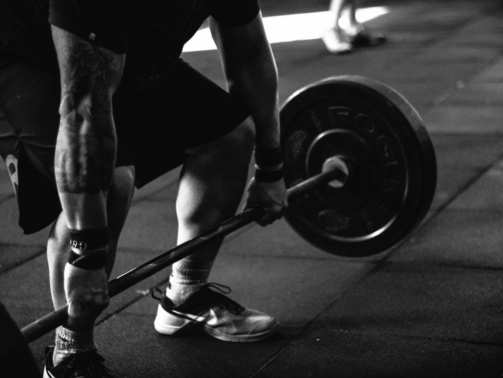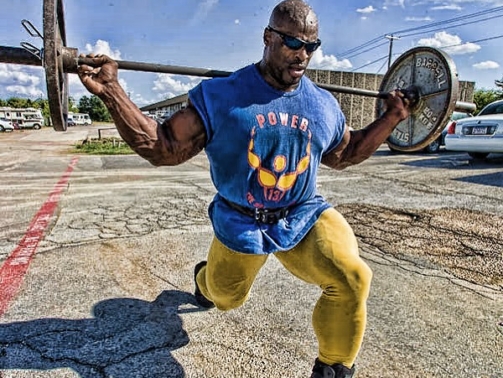Strength
Trap Bar Deadlift: The Most Underrated Weapon in Strength Training
In the world of strength training, few exercises stir as much debate—and confusion—as the trap bar ...
The Ultimate Strength Training Guide: Mastering Hack Squats, Power Cleans, Face Pulls & More
When it comes to building a strong, functional, and aesthetic physique, exercise selection is every ...
Strength Training and Powerlifting: Building a Stronger, Healthier You
Strength training and powerlifting are foundational components of fitness that offer numerous benef ...
Strength Training Subcategory Overview: Principles, Variations, and Benefits
Strength training is a cornerstone of fitness, essential for building muscle, boosting metabolism, and improving overall physical performance. It encompasses a wide array of exercises, equipment, and strategies designed to develop muscular strength, power, and endurance. This subcategory explores different forms of strength training workouts, benefits, programs, and how to start incorporating them into your lifestyle, regardless of your age or fitness level.
What Is Strength Training?
Strength training, also known as resistance training, involves exercises that improve muscular strength and endurance by exerting muscles against resistance. This resistance can come from free weights, machines, resistance bands, or even your own bodyweight. Examples include:
Bodyweight strength training
Grip strength training
Low-impact strength training
The science of strength training highlights its role in improving bone density, joint stability, and hormonal balance.
Types and Styles of Strength Training
There are various types of strength training to suit different goals:
Functional strength training: Mimics real-life activities
Traditional strength training: Targets specific muscle groups
Core strength training: Focuses on abdominal and back muscles
Metabolic strength training: Boosts cardiovascular and muscular endurance
Hybrid strength training: Combines strength and cardio
Sport-specific styles include strength training for:
Runners
Swimmers
Cyclists
Soccer players
MMA fighters
Specialized methods like interval strength training and combat strength training enhance agility, endurance, and power.
Beginner’s Guide and How to Start
Starting strength training doesn’t need to be overwhelming. Useful tools include:
Strength training apps
Structured programs for beginners
Full-body strength training routines
Key beginner tips:
Learn proper form
Begin with bodyweight exercises
Understand appropriate reps for your goals
Equipment and At-Home Options
You don’t need a gym to start strength training. Options include:
Minimal equipment: Resistance bands, strength training shoes, decks
Bodyweight workouts: Calisthenics, no weights needed
Gym tools: Dumbbells, barbells, and strength training belts (e.g., Nike)
Strength Training for Specific Demographics
Strength training can be adapted for all ages and fitness levels:
Women’s programs: Emphasize toning, hormonal balance, and functionality
Men over 50 and older adults: Focus on maintaining muscle, joint health, and mobility
Kids: Improve coordination and support bone growth
Seniors: Promote balance, reduce fall risk, and enhance independence
Books like Strength Training Anatomy by Frederic Delavier and guides for women’s routines are great resources.
Sport-Specific and Special Programs
Athletes benefit from tailored strength routines, including:
Wrestling
Tennis
Baseball
Speed training
MMA and BJJ (Brazilian Jiu-Jitsu)
Boxing
Soccer
Each program targets performance enhancement and injury prevention.
Training Plans and Progress
A structured plan ensures success. Common approaches include:
Full-body workouts
Strength training splits
Training for fat loss or hypertrophy
Strength vs. hypertrophy strategies
Track your progress through:
Training logs
Apps like TrainingPeaks
Metrics: calories burned, reps, and results
Benefits of Strength Training
Beyond muscle gain, strength training:
Aids weight management
Boosts mental health and cognitive function
Improves posture and balance
Enhances core strength for daily functionality
It supports holistic well-being.
Strength Training for Different Languages and Cultures
Strength training is global, with variations and communities worldwide:
Programs available in multiple languages (e.g., Spanish)
Local adaptations in cities like Amsterdam or Eugene, Oregon
Philosophy, Quotes, and Motivation
Motivational tools enrich the journey:
Quotes and transformation stories (e.g., “She started strength training at 49”)
Spiritual practices (e.g., prayer before training)
Core philosophy: Strength training means resilience, discipline, and personal growth
Popular Programs and Resources
Resources to support your journey include:
Books: Strength Training Anatomy Book, Strength Training for Runners
Online communities: Reddit strength training
Multimedia: Strength training videos, PDFs
Apps: Best strength training apps for different needs
Gamified Fitness and Virtual Platforms
Strength training enters the digital age with:
Games like Runescape (OSRS) and BDO strength training
Hybrid training models: Functional strength plus cardio
Engaging formats for younger generations
Conclusion
Strength training is for everyone—from children to seniors, beginners to elite athletes. Whether your goal is fat loss, muscle growth, or better performance, there’s a method for you. With versatile formats, accessible resources, and proven health benefits, strength training remains a foundational element of lifelong fitness.



